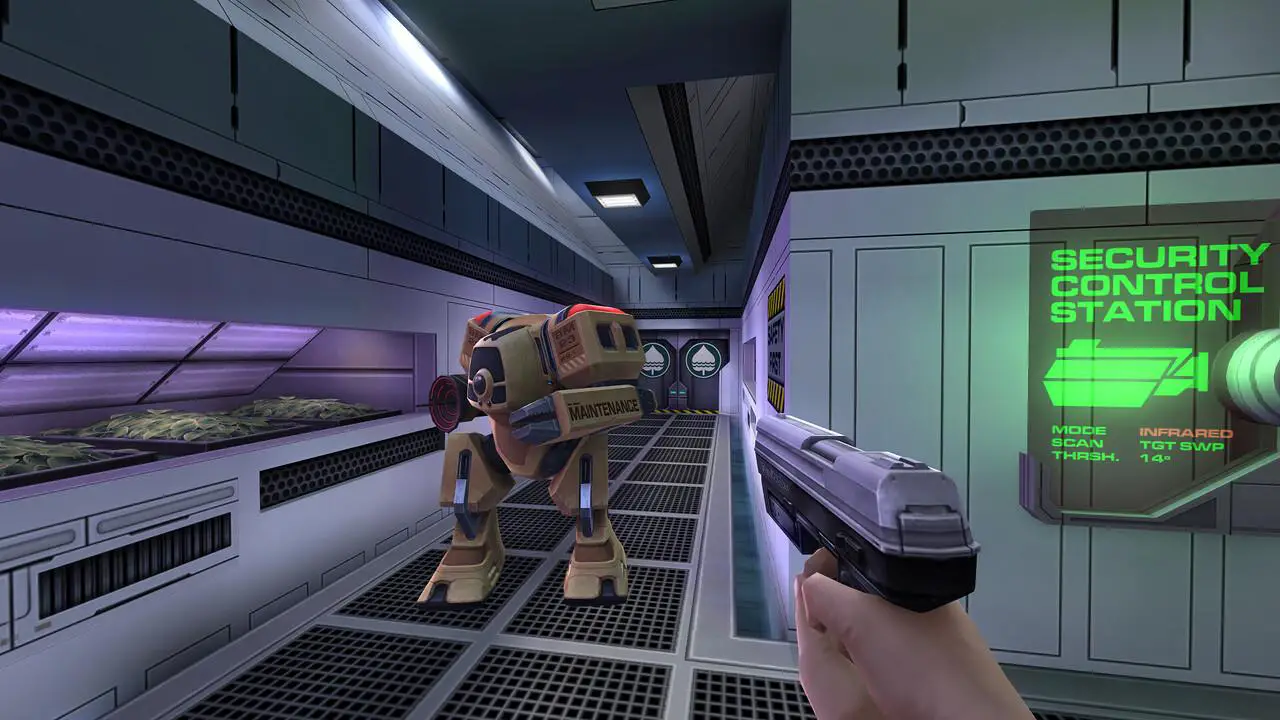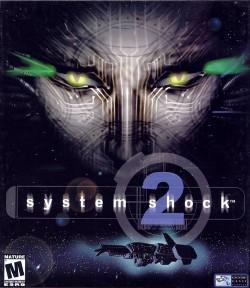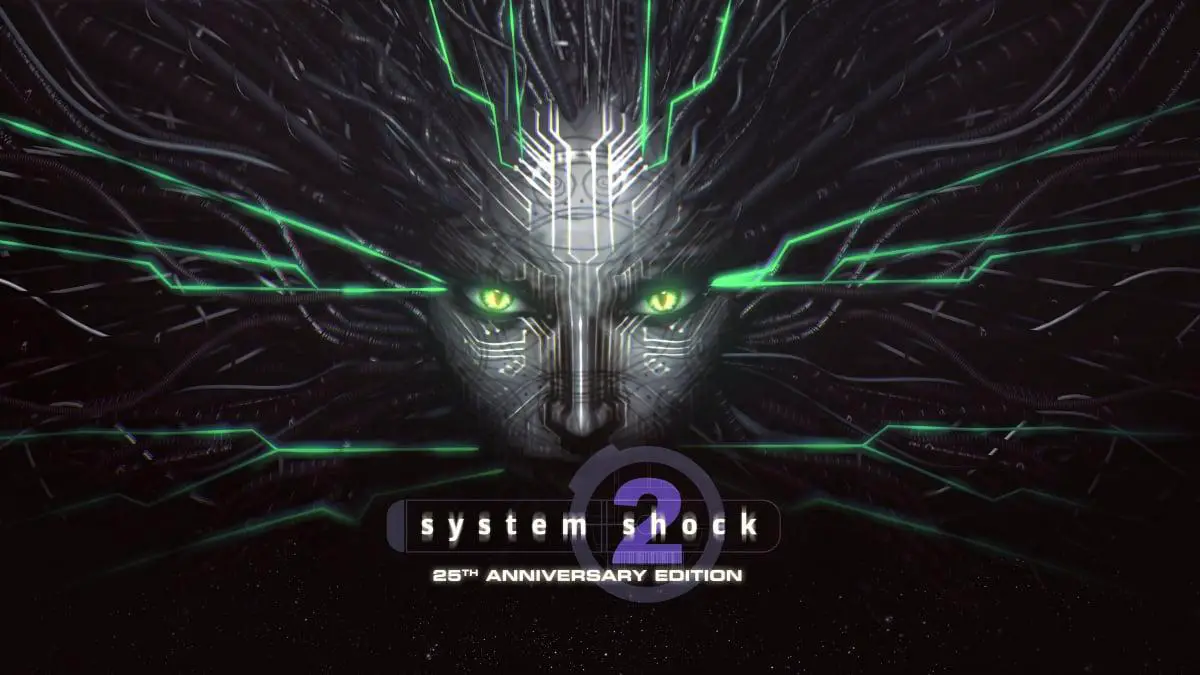In the depths of a cyberspace ravaged by an ancient alien threat, a legendary sci-fi horror classic lies in wait. System Shock 2, the 1999 masterpiece from Irrational Games and Looking Glass Studios, has left an indelible mark on the gaming world. But as the nostalgia for this cult favorite continued to grow, the question on every fan’s mind was: what’s next? Rather than opting for a full-fledged remake, Nightdive Studios, the renowned preservationists of gaming’s golden era, decided to take a more nuanced approach – remastering the original to perfection, while carefully preserving its essence. But why? What drove this decision, and what can we learn from Nightdive’s thoughtful stewardship of a beloved classic? Join us as we delve into the story behind the remaster, and explore the reasoning behind Nightdive’s choice to honor System Shock 2’s legacy, rather than reimagine it from scratch.
Preserving the Original Vision
In maintaining the essence of the original, faithfulness to the source material is paramount. When considering a re-release, the developers weigh the pros and cons of remastering versus remaking a classic title. System Shock 2 is an iconic game that has captivated gamers for generations, and Nightdive’s decision to remaster it reflects a commitment to honoring the original creators’ vision. A remake would have likely altered the gameplay, storyline, or characters, potentially alienating die-hard fans.
Working with a remaster allows for a more delicate touch, with changes limited to those that would improve the player’s experience without compromising the overall narrative. By focusing on polishes and updates, Nightdive aimed to breathe new life into the classic title while still preserving its mechanical, thematic, and artistic core. New additions include:
- Revised graphics and audio
- Enhanced compatibility for modern systems
- Streamlined interface for a better user experience
Additionally, the developers included fresh elements to compliment the core experience, such as:
| Widescreen support | Enjoy the game on larger screens without distortion. |
| High-resolution textures | Richer, more detailed environments for a more immersive experience. |

The Challenges of Remaking a Classic
Any attempt to re-imagine a classic video game, such as System Shock 2, can be mired in challenges and controversies. One of the key concerns is the potential to alter the original narrative or characters in ways that may alienate original fans. As the game’s core identity is deeply intertwined with its nostalgic value, even minor changes can have significant repercussions and be met with fierce opposition from loyal supporters.
This thorny issue presents a daunting predicament for developers seeking to update classic titles, where the lines between progress and preservation become increasingly blurred. On one hand, an updated game risks sacrilegiously tampering with a beloved formula, yet on the other, outright refusal to update the game can make it unintelligible to modern gamers accustomed to present-day graphics and mechanics. The list of considerations can be daunting,
- What elements are essential to the game’s original identity, and should be preserved?
- How much leeway is acceptable when updating gameplay mechanics, visuals, or sound design?
The inherent need for change vs. preservation deters developers to take the milder path of remastering the existing game instead of rewriting it from scratch.
| Approach | Pros | Cons | |
|---|---|---|---|
| Remaster | Quick turnaround | Preserves original elements | No major game-play overhaul |
| Remake | Full revamp possible | Longer development cycle | Loyalty challenges from the original fanbase |

A New Coat of Paint and Improved Gameplay
A fresh coat of paint and some well-placed brushstrokes have breathed new life into this sci-fi horror classic. Nightdive Studios knew that some simple yet effective tweaks could elevate the 22-year-old game into the modern era without sacrificing what made it great. A revamped graphics engine and widescreen support enabled the 1999 release to look its absolute best without altering its retro DNA. Improved lighting, textures, and 3D model rendering added depth and visual clarity, shedding light on System Shock 2’s intricate world.
Smart tweaks were also made to update the gameplay, streamlining certain mechanics to better conform to modern standards while preserving the essence of the original experience. This was all with an eye to avoid over-modernizing, carefully modifying to avoid disrupting the retro rhythm that made the original release so popular. Accessibility features like rebind-able controls and a few valuable quality-of-life tweaks made the gameplay smoother for returning and new players alike.
With these key improvements, Nightdive Studios significantly expanded the options available to users of the updated version. For simple review, here are examples of key user options in System Shock 2 to ensure the user interface remains straightforward to the player:
| Menu Option | Choices |
|---|---|
| Controller Support |
|
| Graphics And Audio Settings |
|
| Accessibility Options |
|
This small-scale renovation not only preserved the initial intentions of the game, but increased the appeal of the augmented game offering to a contemporary crowd.
Why Faithfulness to the Original Matters
Preserving the original vision and intention of a game’s creators is essential when remastering a classic title like System Shock 2. Nightdive’s decision to remaster rather than remake allows fans to experience the game as it was initially intended. This approach also helps to maintain the game’s identity, ensuring that it remains true to its roots.
Remastering with faithfulness in mind means that the core elements of the game remain intact, including its story, gameplay mechanics, and atmosphere. This approach allows players to relive their memories of the original game, while also introducing new players to the classic experience. By contrast, a remake might alter or replace these core elements, potentially alienating fans of the original game.
Remastering vs. Remaking: Key Differences
| Aspect | Remaster | Remake |
|---|---|---|
| Original Content | Retains original content, with minor updates | Often updated or replaced with new content |
| Gameplay Mechanics | Preserves original gameplay mechanics | |
| Atmosphere and Tone | Maintains the original atmosphere and tone |
In-Depth Analysis of System Shock 2s Re-Release
In 2016, Nightdive Studios launched a re-release of the 1999 classic System Shock 2, rekindling the flame of excitement and nostalgia for many. While fans initially hoped for a full remake, Nightdive’s team opted for a thorough remastering instead. This decision stems from the original game’s strengths: a unique atmosphere, coupled with innovative gameplay mechanics and a highly engaging narrative.
Remastering the classic allowed for imperfections to remain intact, yet made the experience smoother and more polished. Here’s a breakdown of Nightdive’s update strategy:
- Wide-screen support and aspect ratios were incorporated to ensure a seamless experience for modern gamers.
- Texture and model overhauls, implementing the best assets from the original while further enhancing them.
- Sound effect improvements and remastered audio providing depth and clarity.
The outcome? A classic SCI-FI thriller elevated for modern gaming standards, yet maintaining the essence of the original’s storytelling.
| Video resolution upscaling | high-resolution textures, up to 1024×1024 pixels |
| Interface adjustments | for smooth experience on modern screens |
In contrast, creating a remake would have entailed reworking the foundation of the original game – throwing out many of its defining qualities and potentially diminishing its individual charm.
Creative Director Warren Spector Weighs In
Spector noted that a remake would have required a complete overhaul of the game’s mechanics, art, and design to fit modern gaming standards, which could have potentially altered the game’s original identity. He emphasized the importance of preserving the game’s retro charm, which was a crucial factor in the decision to remaster the game instead. Spector also pointed out that the original System Shock 2 was a product of its time and its retro aesthetic was a part of its unique identity.
Some of the key considerations that might have influenced Nightdive’s decision to remaster System Shock 2 include:
- Preserving the original game’s identity
- Potential community backlash against significant changes to the game’s mechanics or art style
- Remastering allowed for a more expedited development process, bringing the game to modern platforms more quickly
- Opportunity to maintain the game’s original spirit and charm while still enhancing its presentation
System Shock 2 has been re-released on PC, Mac, and Linux, featuring improved graphics and sound, as well as support for modern widescreen resolutions and hardware.
| System Shock 2 Features | Enhanced Features in the Remastered Version |
|---|---|
| Original Graphics | Upgraded 4K-resolution graphics |
| Original Sound Effects | Improved sound effects with high-fidelity audio |
| Original Controls | Updated controls for modern input devices and customizable keybinds |
A Game Changer in the World of Remasters
Nightdive’s decision to remaster System Shock 2 instead of remaking it is a testament to the studio’s commitment to preserving the original game’s legacy. By choosing to enhance the existing game rather than rebuilding it from scratch, Nightdive ensured that the remastered version would retain the same charm and character that made the original a cult classic. This approach allowed the team to focus on refining the gameplay mechanics, updating the graphics, and improving the overall player experience, all while staying true to the spirit of the original.
In an effort to strike the perfect balance between old and new, Nightdive incorporated several key features into the remastered version, including:
Improved Graphics: Enhanced lighting, textures, and animations bring the game’s dystopian world to life like never before.
Updated Controls: Modernized controls and new keyboard and mouse bindings make navigation and combat feel more intuitive and responsive.
* Enhanced Soundtrack: The remastered soundtrack features reworked audio tracks that perfectly complement the game’s tense atmosphere.
| Original Release | 1999 |
| Remastered Release | 2015 (initial release), 2020 ( Enhanced Edition) |
| Developer | Irrational Games (original), Nightdive Studios (remastered) |
Despite the many improvements, the remastered version of System Shock 2 remains faithful to the original game’s core design, making it an essential experience for both old fans and new players alike.
Nightdive Devs Discuss the Remastering Process
One major reason for the remastering decision was the significant engineering effort required to update the game’s antiquated underlying technology. The original System Shock 2 was built using a mix of custom in-house tools and outdated third-party software, some of which is no longer supported or even available. The team at Nightdive Studios had to weigh the costs and benefits of either re-creating these tools from scratch or finding modern alternatives that could replicate the original game’s functionality.
This undertaking entailed substantial technical risk, involving a considerable investment of resources and time to ensure the updated game would be stable and perform as expected. Some of the key included:
- Decompilation and porting the original game’s codebase to modern platforms
- Updating graphics and sound assets to take advantage of contemporary hardware capabilities
- Integrating support for newer input devices and playstyles
- Preserving the original game’s balance and tuning while still allowing for quality-of-life updates and tweaks
| Update Category | Technical Complexity | Risk Level |
|---|---|---|
| Graphics rendering | Medium-High | Medium |
| Sound and audio processing | High | Medium-High |
| Input device support | Low-Medium | Low |
As demonstrated in the table above, updating certain aspects of the game, such as graphics rendering and sound processing, presented significant technical challenges, while integrating support for newer input devices proved relatively more straightforward.
Maintaining the Authentic Experience
The team’s goal was to ensure that the remastered version stayed true to the original’s essence. To achieve this, Nightdive conducted an extensive analysis of the game’s environment, mechanics, and overall atmosphere. Here are some of the key factors considered:
- Preserving the dark atmosphere and ambiance, which played a crucial role in making System Shock 2 so memorable.
- Updating 3D models, textures, and lighting to modern standards while maintaining their retro aesthetic.
One of the challenges faced by the team was finding a balance between visual enhancements and staying faithful to the original’s vision. In order to achieve this, they relied heavily on the original game’s assets, incorporating them into the remastered version while making the necessary updates.
| Asset | Update |
|---|---|
| Character models | High-poly models with detailed textures |
| Environmental textures | Improved normal mapping and specular lighting |
Comparing the Remastered to the Original
When comparing the remastered version of System Shock 2 to the original, several key differences stand out. One of the most notable is the updated graphics, which bring the game’s dark, atmospheric world to life in a way that was previously impossible. Additionally, the remastered version includes updated sound effects and music, which further enhance the overall immersion and draw the player deeper into the game’s narrative.
Other improvements in the remastered version include updated controls and mechanics, which make the gameplay feel more modern and streamlined. This includes the addition of mouselook and support for widescreen resolutions, allowing for a more cinematic experience. The following table highlights some of the key differences between the original and remastered versions:
| Feature | Original Version | Remastered Version |
|---|---|---|
| Graphics | Outdated 3D graphics | Updated high-resolution graphics |
| Sound | Lo-fi sound effects and music | High-quality sound effects and music |
| Controls | Cumbersome keyboard controls | Updated controls with mouselook support |
| Resolution Support | Only supports low resolutions | Supports widescreen resolutions |
The updated features and improved gameplay mechanics make the remastered version of System Shock 2 a more appealing and enjoyable experience for modern gamers. Some of the most significant benefits of the remastered version include:
- Improved Immersion: The updated graphics and sound effects create a more immersive and engaging experience, drawing the player deeper into the game’s world and narrative.
- Enhanced Gameplay: The updated controls and mechanics make the gameplay feel more modern and streamlined, reducing frustration and increasing the overall sense of enjoyment.
- Broader Appeal: The remastered version’s improved graphics and sound make the game more appealing to a wider range of players, including those who may not have experienced the original.

Future Implications for Retro Games
The decision to remaster System Shock 2 instead of remaking it could set a significant precedent for the world of retro gaming. It suggests that developers are beginning to appreciate the value of preserving the original aesthetic and feel of classic games, rather than simply modernizing them for the sake of it.
This approach is likely to have far-reaching implications for the future of retro gaming. Here are some potential benefits:
Preserving nostalgic value: By maintaining the original look and feel of classic games, developers can help to preserve the nostalgic value that makes these games so beloved.
Allowing for creative freedom: Remastering a game rather than remaking it can give developers the freedom to experiment with new ideas and mechanics, without sacrificing the original spirit of the game.
* Encouraging community engagement: The System Shock 2 remaster has already generated significant buzz in the gaming community, with fans eagerly anticipating the chance to experience the game in a new way.
Some notable examples of remastered retro games that have maintained their original aesthetic include:
| Name | Original Release | Remastered Release |
|---|---|---|
| Monkey Island: Special Edition | 1990 | 2010 |
| Abzû | 2016 | 2018 (VR Remaster) |
| Shadow Man Remastered | 1999 | 2021 |
These examples demonstrate the potential for remastered retro games to find a new audience, while still maintaining the essence of the original experience.
Concluding Remarks
As the lights fade and the darkness of the Many recedes, one thing becomes clear: sometimes the original vision is what truly sets a game apart. By choosing to lovingly remaster rather than remake System Shock 2, Nightdive Studios has shown a profound respect for the source material and the team that brought it to life. In an industry where reboots and reimaginings often take center stage, it’s refreshing to see a developer prioritize preservation over reinvention.
The new and improved System Shock 2 stands as a testament to the enduring power of a classic game. It invites both old fans and new to experience the nightmarish world and the twisted cast of characters that have captivated gamers for generations. As we gaze into the cold, unforgiving void, we’re reminded that sometimes the best way to move forward is to reverently return to where we came from – and that’s exactly what Nightdive Studios has done.






